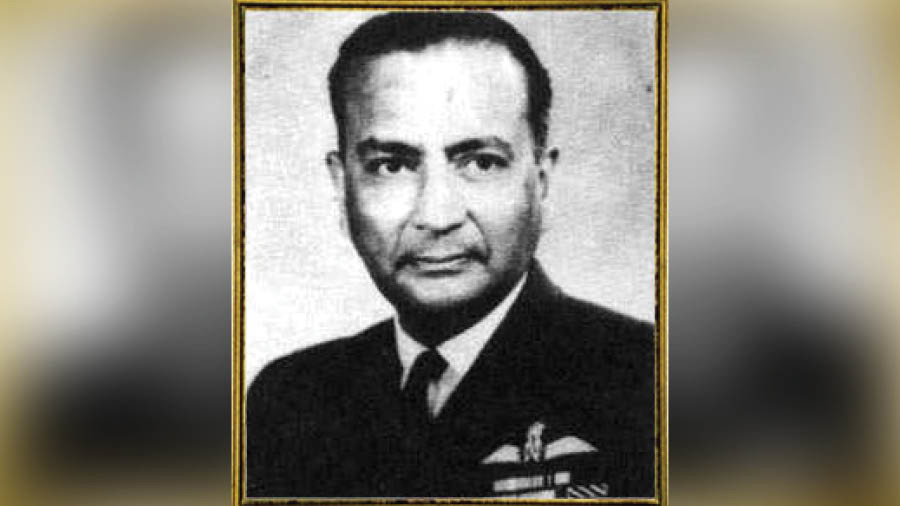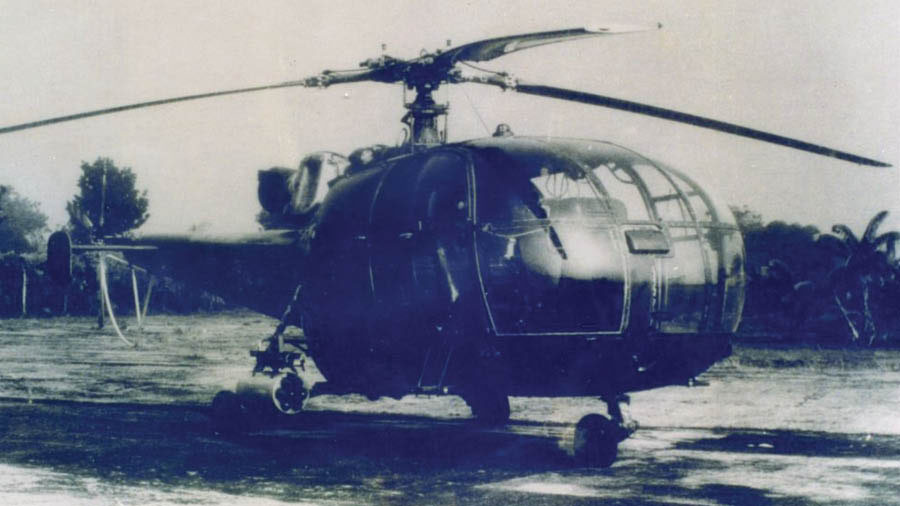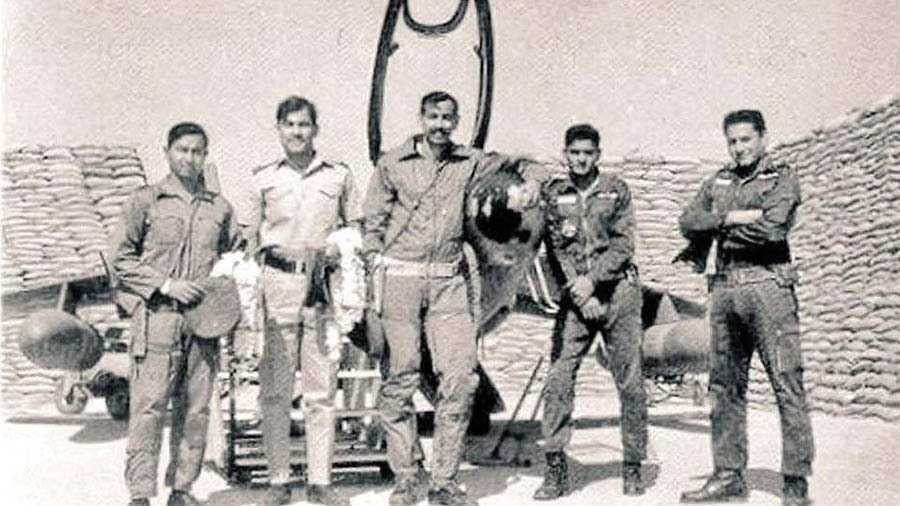On the evening of December 3, 1971, war came to India. At around 5.30pm in the evening, the Pakistan Air Force (PAF) launched raids on Indian Air Force (IAF) bases across north and western India. Amritsar, Pathankot, Srinagar, Halwara, Faridkot and Agra as well as the IAF radar at Barnala were raided by Pakistan Air Force pilots.
But unlike in 1947 or 1965, India was not caught unawares this time. As early as the night of March 25, 1971, when the West Pakistani administration of Yahya Khan launched the brutal crackdown on the Bengali-speaking population of East Pakistan – starting an endless inflow of refugees into India – a third armed conflict in less than 25 years between the subcontinent neighbours had become inevitable.

IAF Chief Air Marshall PC Lal
In the intervening months, Indian defence establishment had not been sitting idle. A resistance movement had taken shape in East Pakistan, comprising Bengali-speaking civilians as well as policemen and defence personnel. This rag-tag bunch of fighters was named Mukti Bahini (Freedom Force) and was given a semblance of structure by the Indian establishment: Army, BSF and the Research Analysis Wing (RAW). Employing guerrilla fighting techniques, the Mukti Bahini, armed by India, made life miserable for the West Pakistani army and their local collaborators.
Among the ex-Pakistani servicemen now part of Mukti Bahini were a number of officers and men from the PAF. For the time being, they were left to function as ground commanders. But in their heart, they yearned to take to the skies once again and secure some payback for the atrocities committed on their land and people by the West Pakistani forces.

Group Captain AK Khandker
Group Captain Khandker^, ex-PAF, had made requests for raising of a Mukti Bahini air force. However, the proposal failed to take off, mainly because independent Bangladesh was yet to receive any kind of international recognition. But it changed, thanks to a dinner at Calcutta. In August 1971, IAF Chief Air Marshall PC Lal, while visiting Calcutta, invited Khandker for dinner. At this event, the Bangladeshi officer tried to highlight his hope for an air wing for the Mukti Bahini and found strong support from an unexpected quarter. The chief’s better half took up his cause and made passionate pleas to her husband for the same. Lal promised to try his best and in the time to come, Khandker always expressed his gratitude to Mrs Lal for her surprise cameo!
The IAF chief kept his word and soon, Khandker was elated to receive the news of the Indian government approving a proposal for formation of an air wing for the Mukti Bahini. He now enthusiastically immersed himself into locating Bangladeshi pilots who would have the honour of setting up of Bangladesh Air Force.
The journey began at IAF base Dimapur where Flight Lieutenant Shamsul Alam, ex-PAF and six civilian pilots: mainly from Pakistan International Airlines, were soon training on transport aircrafts like the Otter and Douglas Dakota. At the same time, Flight Lieutenant Badr-ul-Alam and a few others started training on an Aloutte III (Chetak) helicopter. 67 former ground crew from the PAF were also transferred to Dimapur. The unit was formally raised on September 28, 1971*.

Aloutte 3
Four days later, Squadron Leader Sultan Ahmed arrived at the base and took over as the commanding officer of the unit while also training on the Aloutte. Two days later, on October 4, the unit was formally named the ‘Kilo Flight’. Despite the poor living conditions at the Dimapur base, the Bangladeshi airmen rigorously underwent training under supervision of IAF instructors. Their morale received a huge boost when on October 11, the Otter landed in Dimapur carrying a fresh coat of green paint with the Bangladeshi flag painted on its wings and tail.
On December 1, the Kilo Flight pilots were transferred from Dimapur to Jorhat. There was anticipation in the air. And their much awaited moment finally arrived when station commander Group Captain Chandan Singh opened the meeting with the lines, “Gentlemen, your long awaited day has arrived…. We have decided you, the Kilo Flight, will start the war on the eastern front.”
The pilots were next briefed on their targets – fuel dumps at Narayanganj and Chittagong by night attack. The Otter and the Aloutte, now fitted with rocket pods would take part in the attack. By this time, the Indian defence establishment was anticipating attacks on Indian targets any day. Their hunch came true on the evening of December 3. The attack immediately set Kilo Flight’s timer running.

Otter
Their intensive training they had undertaken now came handy. At 930pm IST on December 3, CO of Kilo Flight, Squadron Leader Sultan Ahmed, took off from Agartala in the Aloutte 3 for Narayanganj. A few minutes later, the Otter, piloted by Flight Lieutenant Shamsul Alam, readied to take off, destination Chittagong.
An hour’s flight brought the Otter to the Chittagong port. The moment of truth had arrived. Soon, two rockets were fired at oil tanks which instantly turned into fireballs. As Chittagong port’s anti-aircraft guns opened up, the Otter turned back. But it had one last trick up its sleeve. While exiting, Alam fired his last two rockets at an anchored ship, damaging it severely. As the Otter made its final exit, the 4-man crew, now bubbling with excitement, let loose a cry in unison – Joy Bangla (Glory to Bangla)!!
At the same time, Sq. Leader Sultan Ahmed’s Aloutte also carried out raids at Narayanganj. Both flights safely returned to Agartala without any damage. The IAF’s big boys – Migs, Gnats and Sukhois – were now ready to take over and create havoc for the enemy. In the grander scheme of things, the two raids of the Kilo Flight were merely symbolic and did little real damage to the enemy. But by giving the Bangladeshi pilots the honour of taking first strike and firing the first reprisal blows, the Indian defence establishment and the IAF made a smart tactical move as it infused a sense of renewed pride across the Mukti Bahini and made India’s solidarity with the Bangladesh liberation cause even more prominent.
In less than two weeks, East Pakistan would cease to exist and a new nation would be born: Bangladesh.
^ Post the independence of Bangladesh, Khandker became the first Chief of Bangladesh Air Force (BAF)
* The BAF still considers this date as its formal founding day
Acknowledgements: Eagles over Bangladesh: The Indian Air Force in the 1971 Liberation War – P.V.S Jagan Mohan and Samir Chopra


